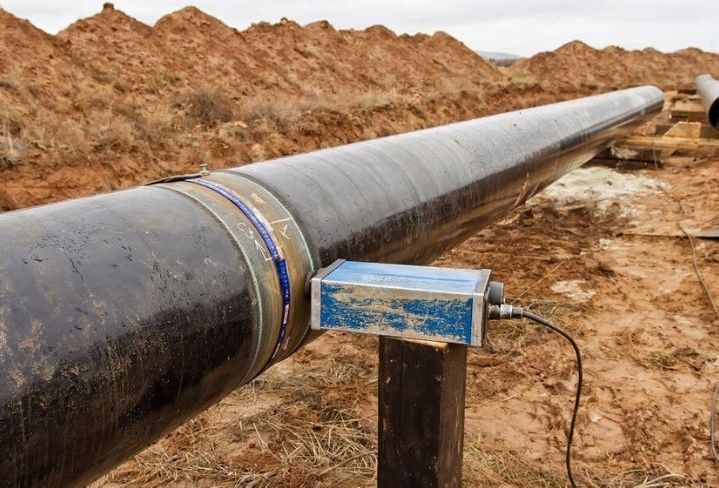Have you ever wondered how the integrity of buried or submerged metallic structures like pipelines, storage tanks, and steel pilings is maintained to prevent corrosion? The answer lies in a sophisticated technique known as Impressed Current Cathodic Protection (ICCP). In this article, we’ll dive deep into the world of ICCP, exploring how this technology plays a pivotal role in prolonging the lifespan of such structures and ensuring their safe operation. As we navigate through this topic, prepare to uncover the principles, components, and benefits of ICCP, shedding light on its significance in the modern world.
What Exactly is Impressed Current Cathodic Protection?
Impressed Current Cathodic Protection is a method used to control the corrosion of a metal surface by making it the cathode of an electrochemical cell. It involves the application of a direct current to the metal to be protected, which is sourced from a more noble external anode, typically made of materials like platinum or mixed metal oxides. This current effectively polarizes the protected structure to a more negative potential, reducing its tendency to corrode. ICCP is particularly useful for protecting large structures in highly corrosive environments, where passive galvanic protection is insufficient.

Key Components of an ICCP System
The ICCP system comprises several crucial components that work in harmony to prevent corrosion effectively. At its core, the system includes an external power source, often a rectifier, that converts AC to DC current. Anodes made from durable materials like titanium, coated with mixed metal oxides, are strategically placed in the environment around the structure. Reference electrodes monitor the potential of the metal surface, ensuring the correct level of protection is maintained. Finally, the structure itself acts as the cathode, completing the circuit.
The Operation Mechanism of ICCP
Understanding the operation of an ICCP system is essential to grasp its effectiveness. The process begins with the rectifier delivering DC current to the anodes. These anodes then release electrons into the surrounding medium, which are absorbed by the cathodic structure. This electron flow neutralizes the anodic reaction sites on the metal surface, preventing the metal ions from dissolving into the environment and, thus, halting corrosion.
Applications of Impressed Current Cathodic Protection
Impressed Current Cathodic Protection (ICCP) is a critical safeguard for infrastructure. It’s widely used in pipelines, safeguarding them against corrosion that can lead to leaks or ruptures, thus preventing environmental disasters and ensuring uninterrupted flow of resources like oil and gas.
In the maritime industry, ICCP is indispensable for protecting ships’ hulls. This application extends the vessels’ service life and minimizes maintenance costs, ensuring that these colossal structures can withstand the harsh marine environment without succumbing to corrosion.

Moreover, ICCP finds application in protecting underground storage tanks from corrosion. This is crucial for preventing contamination of stored substances, particularly in the case of tanks holding hazardous materials. By employing ICCP, industries can ensure the integrity and safety of their storage solutions.
Benefits and Advantages of ICCP
One of the foremost benefits of ICCP is its ability to provide comprehensive protection. Unlike passive methods, ICCP actively counteracts corrosion across extensive areas and complex structures, offering a uniform shield against corrosive elements.

Additionally, ICCP systems are highly adaptable. They can be fine-tuned to meet the specific protection requirements of different structures and environments. This flexibility ensures optimal performance and extends the lifespan of the protected assets significantly.
Lastly, the long-term cost savings afforded by ICCP are substantial. By dramatically slowing the corrosion process, ICCP reduces the need for costly repairs and replacements, making it a financially sound investment for protecting valuable infrastructure.

Challenges and Considerations
While ICCP is a powerful tool against corrosion, it’s not without its challenges. The initial setup and maintenance of an ICCP system can be costly and requires regular monitoring to ensure effectiveness. Moreover, improper implementation can lead to overprotection, causing hydrogen embrittlement or disbondment of protective coatings. Therefore, a thorough understanding of the structure’s specific needs and careful system design is crucial for the successful application of ICCP.
Conclusion
Impressed Current Cathodic Protection stands as a testament to human ingenuity in the fight against corrosion. Its application not only preserves the structural integrity of vital infrastructures but also ensures their operational safety and longevity. As technology advances, the efficiency and applicability of ICCP systems are bound to increase, further solidifying their role in our ongoing battle against corrosion. With careful design and maintenance, ICCP remains a cornerstone technique in corrosion prevention strategies worldwide.





